

Waldorf Graduates Pursue Meaningful Careers

Will My Child Succeed After Waldorf High School? The Research Says Yes
Choosing a high school is a critical decision, and parents often wonder: Will this education prepare my child for college, career, and life?
For families considering Waldorf high schools, this question is especially relevant. With experiential learning, seminar-style discussions, and an interdisciplinary curriculum, can Waldorf truly equip students for fields like medicine, law, technology, and business?
Decades of research say yes.
Waldorf Graduates Excel in Higher Education and Careers
A 60-year study (Survey of Waldorf Graduates, Phase II, Mitchell & Gerwin, 2007) found that:
- 94% of Waldorf graduates attend college.
- 42% major in science-related fields—more than double the national average.
- Many earn advanced degrees in medicine, law, engineering, business, and the arts.
- Alumni thrive in fields ranging from finance and research to entrepreneurship and sustainability.
Waldorf Alumni Spotlight: Science in Action
After earning a degree in Earth Systems Engineering from the University of Michigan, Gavin Chensue ('06) joined the NOAA Commissioned Officer Corps, leading critical climate studies worldwide.
"Steiner education gave me a taste of everything. When I needed direction in college, I remembered how much I loved studying weather and geology—and that led me to where I am today." - Gavin Chensue (RSSAA '06), Research Engineer at SRI International, Former NOAA Corps Officer
His story highlights how Waldorf graduates succeed in STEM, combining curiosity and real-world problem-solving to make a global impact.
Read the full studies:
- Survey of Waldorf Graduates, Phase II: https://www.waldorfeducation.org/research
- Into the World Study: https://www.waldorfeducation.org/graduate-outcomes
What Makes a Waldorf Education So Effective?
Contrary to the belief that test-driven education leads to success, research shows that employers and universities highly value graduates who:
✔ Think critically and independently
✔ Communicate clearly and persuasively
✔ Collaborate effectively
✔ Solve complex problems
✔ Adapt to a changing world
These are precisely the skills Waldorf high schools cultivate.
1. Depth Over Memorization: Lifelong Knowledge Retention
Rather than rote memorization, Waldorf fosters deep understanding:
- History is explored through primary sources and narratives.
- Science emphasizes hands-on experiments and independent research.
- Mathematics focuses on real-world application.
- Literature and philosophy encourage analytical discussions.
One employer noted:
“Waldorf students don’t just look for the right answer—they explore the why and how behind complex issues.”
2. Seminar-Style Learning Develops Exceptional Communicators
Waldorf emphasizes oral presentations, debates, and collaborative discussions, preparing graduates for leadership roles in law, finance, business, and medicine.
Dr. Ilan Safit, co-author of *Into the World*, states:
“We consistently hear that Waldorf graduates excel at teamwork and leadership. Their ability to articulate complex ideas is a major asset.”
A study from Da Vinci Waldorf School found that Waldorf students select careers based on values and passion rather than prestige or income.
Final Thoughts: The Research Speaks for Itself
Professors and employers highlight Waldorf graduates’ intellectual curiosity and ability to think independently.
With strong college attendance rates, success across multiple professions, and the skills needed to navigate a complex world, one thing is clear:
Waldorf graduates don’t just succeed—they thrive.
Professors and employers highlight Waldorf graduates’ intellectual curiosity and ability to think independently.
With strong college attendance rates, success across multiple professions, and the skills needed to navigate a complex world, one thing is clear:
Waldorf graduates don’t just succeed—they thrive.
Read more on Waldorf Graduates
Selecting a High School

Selecting a High School
Advice from Veteran Waldorf Educators
Choosing the right high school can feel like one of the most significant decisions a family will make in their child’s educational journey.
To bring clarity to this decision, we turned to two of our most experienced educators at the Rudolf Steiner School of Ann Arbor: Margot Amrine, a longtime Waldorf teacher with over four decades of experience, and Dr. Siân Owen-Cruise, our former School Administrator, who has guided countless families through the high school selection process.
Today’s parents listen to and respect their children’s perspectives more than ever before- a positive shift in family dynamics. But as Margot reminds us, that doesn’t mean parents should surrender their leadership on big decisions.
“In our family we said that Waldorf Education for 9th and 10th grade was essential. At 11th grade, a different kind of maturity sets in; if our children had made compelling reasons to leave then, we would have considered. We never had these discussions!”
Dr. Owen-Cruise expands on this, acknowledging that social pressures play an outside role in an 8th Grader's thinking:
“It's natural for teenagers to focus on their peers and social dynamics when thinking about high school. As parents, we listen, we understand, and we take their feelings seriously- but ultimately, we need to lead this decision with wisdom and foresight.”
Dr. Owen-Cruise often frames the conversation with the rising student in the following way:
“Your parents will choose where you receive your high school education, with your input. YOU will choose where you go to college, with our parental input.”
Many families who have walked this path find that their children- whether they started in Waldorf Education or joined from another school-ultimately express gratitude that their parents guided this decision with their long-term development in mind.
Here are some other helpful tips and information when thinking about our own High School:
Waldorf Graduates Pursue Meaningful Careers
“Will My Child Succeed After Waldorf High School? The Research Says Yes” - Blog Article
Parents often ask: Does a Waldorf education prepare students for college, careers, and beyond? The answer is a resounding yes. Studies show that Waldorf graduates not only attend college at high rates but also excel in fields like science, medicine, law, and technology. Employers and universities consistently praise their ability to think critically, communicate effectively, and adapt to a changing world. Want to know why? This article dives into the research and real-world successes of our alumni.
The Joy of a Phone-Free School: How Our Students Thrive Without Screens
"The Joy of a Phone-Free School: How Our Students Thrive Without Screens" - Blog Article
In an age where screens dominate every aspect of life, imagine a school where students engage in real conversations, dive into hands-on projects, and focus fully in class—without the pull of notifications. Our phone-free policy isn’t just a rule; it’s a game-changer. See how it shapes our students’ social and academic lives!
The Joy of a Phone-Free School: How Our Students Thrive Without Screens
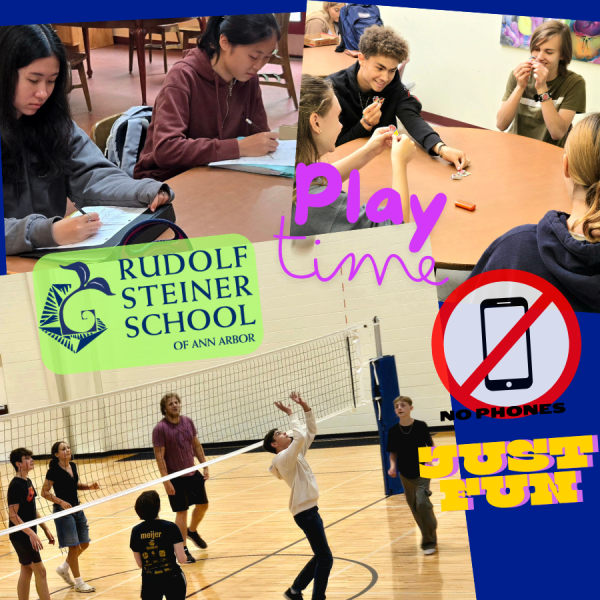
The Joy of a Phone-Free School: How Our Students Thrive Without Screens
Imagine a typical school day where students, between classes and during breaks, are glued to their smartphones—scrolling through social media, playing games, or texting. Conversations are sparse, eye contact is minimal, and the vibrant energy of youthful interaction seems subdued. Now, contrast this with a school environment where smartphones are set aside: students engage in lively face-to-face discussions, participate in spontaneous games, and immerse themselves fully in classroom activities without the constant pull of notifications. This is the reality we’ve cultivated at Rudolf Steiner School of Ann Arbor, embracing a phone-free policy that fosters genuine connections and holistic development.
The Deeper Engagement of Phone-Free Education
At our school, we’ve observed that removing smartphones from the school day does more than just eliminate distractions—it rekindles a deeper, more meaningful engagement among students. Freed from screens, students rediscover the joy of direct communication, collaborative problem-solving, and hands-on learning. This environment aligns seamlessly with the principles of Waldorf education, emphasizing experiential learning and nurturing the whole child.
We Are Phone-Free, Not Tech-Free
While our school maintains a phone-free environment during school hours, we are not devoid of technology. In fact, our curriculum incorporates technology in age-appropriate ways to ensure students are prepared for the digital world:
• Middle School: Students are introduced to computers and the internet in an intentional way that supports learning. Additionally, our middle school robotics club fosters interest in technology and engineering through hands-on projects. https://www.steinerschool.org/programs/extracurricular-activities.cfm
• High School: Our state-of-the-art computer lab facilitates courses in coding, digital literacy, and other computer science subjects. We also have an active high school robotics club where students collaborate on competitive projects that develop real-world problem-solving skills. https://www.steinerschool.org/about-us/waldorf-education.cfm
Many of our graduates go on to thrive in technology fields, excelling in computer science, engineering, and data analysis. Research shows that Waldorf graduates develop strong interdisciplinary thinking skills that prepare them for success in fields that require both creativity and technical expertise.
Leading the Way in Ann Arbor
Our commitment to a phone-free school day positions us as pioneers in the Ann Arbor educational community. While some other local schools have implemented partial restrictions, our comprehensive approach ensures that students remain unplugged throughout the day—including breaks and transitions between classes.
Several Ann Arbor schools are recognizing the value of limiting phone use:
• Forsythe Middle School and Tappan Middle School both require students to keep phones in lockers during school hours. https://forsythe.a2schools.org/our-school/cell-phone-policy, https://tappan.a2schools.org/our-school/cell-phone-policy
• Huron High School has introduced classroom phone storage policies in its Mathematics and English departments to help students stay focused. https://thehuronemery.com/9731/news/cell-phone-use-teacher-led-procedures-to-enrich-student-experience/
The Transformative Power of Disconnecting
The shift to a phone-free environment has yielded profound benefits:
• Enhanced Academic Focus: Without the allure of smartphones, students engage more deeply in lessons, leading to improved comprehension and retention.
• Strengthened Social Bonds: Face-to-face interactions during breaks and collaborative projects foster authentic relationships and empathy among students.
• Improved Mental Well-being: Reducing screen time has been linked to decreased anxiety and stress, allowing students to be more present and mindful.
Embracing a Connected Future Without Phones
As more schools recognize the value of limiting smartphone use, it’s evident that this movement is not about restricting technology but about reclaiming the essence of human connection and focused learning. By leading the way in this initiative, Rudolf Steiner School of Ann Arbor not only adheres to the foundational principles of Waldorf education but also prepares students for careers in STEM, the arts, and beyond.
We invite families seeking a nurturing, distraction-free educational environment to join us in this journey, where students can truly engage with the world around them and develop into well-rounded individuals.
Explore the experiences of other schools with phone-free policies:
• “New data reveals shocking trend since school mobile phone ban”
- “The big smartphone school experiment”
https://www.thetimes.co.uk/article/inside-schools-ban-smartphones-6knb8qtfc
- “Cell phones hinder classroom learning. Texas should tell school districts to lock them up”
- "Waldorf Schools are Media Literacy Role Models"
https://www.steinerschool.org/about-us/waldorf-schools-are-media-literacy-role-models/
An Unhurried Childhood
A recent New York Times article highlighted the importance of giving children an unhurried childhood, without an overpacked schedule of extracurricular activities and excessive homework. The pressure on Gen Z to excel at a young age has led to decreased mental health and increasing struggles at school. Waldorf Education takes a balanced approach, with plenty of time for children to play and explore, while also providing a joyful and well-rounded education that instills essential life skills, sparks a lifelong love of learning, and prepares them for a successful future.
This article was written by Shalini Shankar and originally published on July 9, 2021 in the New York Times
A Packed Schedule Doesn’t Really ‘Enrich’ Your Child
When the extracurricular-industrial complex came to a grinding halt last spring, parents were left scrambling to fill vast hours of unscheduled time. Some activities moved to remote instruction but most were canceled, and keeping children engaged became the bane of parents’ existence. Understandably, screens became default child care for younger kids and social lifelines for older ones.
As American society reopens, going back to our children’s prepandemic activities looks like an enticing way to reintroduce upper-elementary through high-school-age kids to the outside world. For parents with economic means, it’s tempting to return to a full slate of language classes, sports, music lessons and other extracurriculars — a guilt-free plan to keep kids busy with “enriching” activities while we get our jobs done.
But I suggest pausing before filling up their calendars again. We should not simply return children to their hectic prepandemic schedules.
Certainly, some amount of extracurricular activity can offer a welcome break from screens and help children nurture interests. But for Generation Z, the over-scheduling of extracurricular activities has been bad for stress and mental health and even worse for widening racial gaps. Moreover, as I learned when I conducted anthropological research for my book “Beeline: What Spelling Bees Reveal About Generation Z’s New Path to Success,” it no longer consistently improves the prospects of the white middle-class kids for whom it was designed.
But what can parents do with our kids instead? The answer is simple, though not easy to carry out: We can teach them (and perhaps relearn ourselves) the value of unstructured time and greater civic participation.
This does not mean we should quit our day jobs and devote ourselves instead to endless hours of building forts and playing games. Exposing children to sports, music, art, programming or dance certainly has benefits — including physical exercise, intellectual stimulation and fun — but there are also good reasons to give children time to be bored. Not least of these is it forces them to figure out a way to entertain themselves.
For many kids today, scheduled time and down time on their screens are the only states of being. Paradoxically, scheduled unstructured time could address this. Cooking, reading a book, art projects and neighborhood walks are unlikely to completely replace screens, but routinizing blocks of time for these self-sustaining activities each day or several times a week could introduce children and teenagers to new pleasures, and at the very least invite calmness.
Gen Z acutely feels the pressure to be accomplished at a younger age. As kids take on a wider range of challenging activities younger, a trend that began with millennials but has grown to steroidal levels, the criteria for standing out in the college admissions process have shot up accordingly. It’s no wonder kids are stressed out.
The Slacker Generation, an initially disparaging label that Gen Xers have reclaimed, did not have to build a childhood résumé brimming with skills, expertise and accolades to get into college. Now many of these former slackers are parents worried about whether their kids are doing enough to stay competitive in college admissions and the job market. Those who can afford it feel pressure to pad their kids’ résumés as much as they can. A 2019 survey found that more than a quarter of “sports parents” spent upward of $500 per month, with some spending over $1,000 and jeopardizing their retirement savings.
But it’s clear by now that all this expensive enrichment won’t ensure kids’ success. Despite middle- and upper-class millennials mortgaging their childhood to get into college and then toiling through early adulthood in unpaid internships, they are unable to acquire the levels of economic and social security still held by their baby boomer parents.
Perhaps that’s why Gen Z has shown astute awareness of the dangers of overwork, with some high-profile Zoomers demonstrating acts of radical self-preservation. The Gen Z tennis star Naomi Osaka, for example, recently chose to prioritize her well-being over her career’s demands when she dropped out of the French Open after officials fined her for declining to participate in its post-match news conferences. Gen Z seems to have accepted that no matter how much you love your job, your job won’t love you back. Their parents — Gen Xers and even older millennials — were late to this lesson, and if they learned it at all, it was often only when they hit a wall with burnout.
Of course, preparing children for college and the job market is not the only goal of parents shelling out for guitar lessons or robot-making labs. Parents are also eager to expose their children to different ways of using their minds and bodies in the hope that they’ll discover passions that could become vocations, or simply lifelong joys. One passion that’s worth trying to instill is civic participation.
As parents, we can reinforce the importance of caring beyond one’s own success. Taking your kids to volunteer or to protest injustices they see in the world are good ways to show them what it looks like to give back and replenish. The human and nonhuman connections they will make at food pantries and animal shelters can help kids cultivate empathy — itself a valuable skill for navigating life — while offsetting the anxiety footprint caused by today’s inflated standards for success.
It might feel counterintuitive to deny your children the leg up in life that many extracurriculars promise, but it’s worth examining that impulse too. The pandemic has exacerbated existing socioeconomic disparities, especially along racial lines. With widening wealth gaps, there will be even fewer opportunities to prioritize extracurricular activities for low-income kids. Rethinking the value of a packed calendar offers a concrete opportunity to narrow the racial and economic gaps between privileged and underprivileged kids.
Replacing video games with nature walks might not make you the most popular parent. Your kids may complain a little (or a lot) about losing some of their organized fun, since boredom is a feeling they’ve rarely experienced. But they’ll figure it out.
An Education Where Kids Feel ‘Seen’
One of the best scientific predictors for how a child turns out in terms of happiness, academic success, and meaningful relationships is whether adults in their life consistently show up for them. Waldorf teachers strive to see and recognize each of their students, greeting them each morning individually, and working with them over multiple years to build on their unique strengths and meet their individual challenges so they can thrive.
This article was originally published by Daniel J. Siegel MD + Tina Payne Bryson PhD at https://ideas.ted.com/every-kid-needs-to-feel-seen-here-are-2-ways-you-can-do-this/
One way to set up a child for success: Take some time every day to really see them for who they are, not for who you want them to be.
Psychiatrist Daniel J. Siegel and Social worker Tina Payne Bryson.
One of the very best scientific predictors for how any child turns out — in terms of happiness, academic success, leadership skills, and meaningful relationships — is whether at least one adult in their life consistently shows up for them. And showing up doesn’t take a lot of time or energy, according to psychiatrist Daniel J. Siegel and social worker Tina Payne Bryson. Instead, it just requires acting in ways that ensure a child feels the Four S’s: Safe, Seen, Soothed and Secure. In this excerpt from their new book, The Power of Showing Up, Siegel and Bryson share two strategies that can make a child feel seen.
How good are you at seeing your kids? We mean really seeing them for who they are — perceiving them, making sense of them, and responding to them in timely and effective ways. This is how your child comes to experience the emotional sensation not only of belonging and of feeling felt, but also of being known.
Science suggests, and experience supports, that when we show up for our kids and give them the opportunity to be seen, they can learn how to see themselves with clarity and honesty. When we know our kids in a direct and truthful way, they learn to know themselves that way, too. Seeing our kids means that we ourselves need to learn how to perceive, make sense, and respond to them from a place of presence, to be open to who they actually are and who they are becoming, not who we’d like them to be and not filtered through our own fears or desires.
Take a moment and fast forward, in your mind, to the future when your child, now an adult, looks back and talks about whether he felt seen by you. Maybe he’s talking to a spouse, friend or therapist, someone they’d be brutally honest with. Perhaps he’s holding a cup of coffee, saying, “My mom, she wasn’t perfect, but I always knew she loved me just as I was.” Or, “My dad was always in my corner, even when I got in trouble.”
Would he say something like that? Or would he talk about how his parents always wanted him to be something he wasn’t, didn’t take the time to understand him, or wanted him to act in ways that weren’t authentic in order to play a particular role in the family or come across a certain way?
One of the worst ways we fail to see our children is to ignore their feelings. With a toddler, that might mean telling him, as he cries after falling down, “Don’t cry. You’re not hurt.” Or, an older child might feel genuinely anxious about attending the first meeting of a dance class. It’s unlikely she will feel more at ease if you say, “Don’t worry about it — there’s no reason to be nervous.”
Yes, we want to reassure our kids, and to be there for them to let them know they’ll be okay. But that’s far different from denying what they’re feeling, and explicitly telling them not to trust their emotions.
So instead, we want to simply see them. Notice what they’re experiencing, then be there for them and with them. We might say something like, “You’re going to be okay” or “Lots of people feel nervous on the first day. I’ll be there until you feel comfortable.”
When they feel felt and seen, it can create a sense of belonging as your child feels authentically known by you. She will also derive a sense of being both a “me” who is seen and respected and part of a “we”– something bigger than her solo self but that doesn’t require a compromise or the loss of her sense of being a unique individual. This is how seeing your child sets the foundation for future relationships where they can be an individual who is also a part of a connection.
What’s more, the empathy we communicate will be much more likely to create calm within our child. As is so often the case, when we show love and support, it makes life better not only for our child but for us as parents as well.
Strategy #1 for helping kids feel seen: Let curiosity lead you to take a deeper dive
A practical first step to helping our kids feel seen is just observe them — take the time to look at their behavior, discard preconceived ideas, and consider what’s really going on with. But really seeing them often requires more than just paying attention to what’s readily visible. Just as with adults, it’s often the case with children that there’s more going on beneath the surface than they let on. As parents, part of our responsibility is to dive deeper.
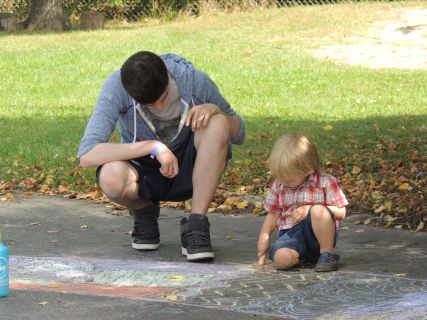
This curiosity is key. It’s one of the most important tools that a caring parent can use. When your toddler plays the “let’s push the plate of spaghetti off the high chair” game, your initial response might be frustration. If you assume he’s trying to press your buttons, you’ll respond accordingly. But if you look at his face and notice how fascinated he is by the splatter on the floor and the wall, you might feel and respond differently.
Cognitive scientists Alison Gopnik, Andrew Meltzoff and Patricia Kuhl have written about “the scientist in the crib,” explaining that a large percentage of what babies and young children do is part of an instinctual drive to learn and explore. If you can take a moment, pause and ask yourself, “I wonder why he did that?” If you see him as a young researcher who is gathering data as he explores this world, you can at the very least respond to his actions with intentionality and patience, even as you clean up his experiment.
We encourage parents to chase the “why” behind kids’ behavior. By asking “Why is my child doing that?” rather than immediately labeling an action as “bad behavior,” we’re much more likely to respond to the action for what it is. Sometimes it really may be a behavior that should be addressed. We believe that children definitely need boundaries, and it’s our job to teach them what’s okay and what’s not. But other times a child’s action may come from a developmentally typical place, in which case it should be responded to as such.
The same goes for other behaviors. If your child is quiet when she meets an adult and resists speaking up, she may not be refusing to be well mannered; she may be feeling shy or anxious. Again, that doesn’t mean you don’t teach her social skills along the way or encourage her to learn to speak in situations that are uncomfortable. It just means you want to see her for where she is right now. What are the feelings behind the behavior? Chase the why and examine the cause of her reticence; then you can respond more intentionally and effectively.
Strategy #2 for helping kids feel seen: Make space and time to look and learn
Much about seeing our kids is simply paying attention during the day, but it’s also about generating opportunities that allow your kids to show you who they are. Nighttime can be a great time to do this. There’s something about the end of the day, when the home gets quiet and the body feels tired, when distractions drop away and defenses are down, that makes us more apt to talk about our thoughts and memories, our fears and desires. This goes for all of us, adults and kids.
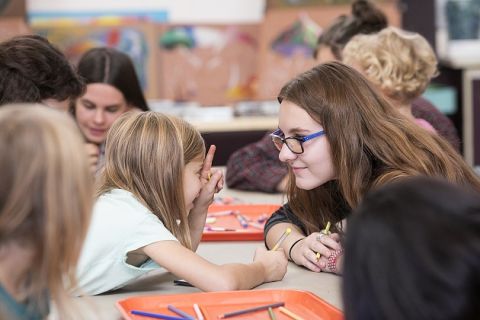 What’s required is a bit of effort and planning in terms of the family schedule. Kids need an adequate amount of sleep — we can’t stress that enough — so ideally you’ll begin bedtime early enough to make time for your usual routine plus a few minutes of chat or quiet waiting time to allow your children to talk if they are inclined. They might share details of their day or ask questions that help you gain a fuller understanding of what’s going on in their worlds — actual or imaginary.
What’s required is a bit of effort and planning in terms of the family schedule. Kids need an adequate amount of sleep — we can’t stress that enough — so ideally you’ll begin bedtime early enough to make time for your usual routine plus a few minutes of chat or quiet waiting time to allow your children to talk if they are inclined. They might share details of their day or ask questions that help you gain a fuller understanding of what’s going on in their worlds — actual or imaginary.
We know what some of you are thinking: “I don’t have one of those kids who willingly shares what they’re thinking and feeling.” We get it. The answer to the “How was your day” question seems to inevitably lead to the dreaded “Fine.” Imagining a chat time added to your child’s bedtime routine may produce the unpleasant image of you and your child silently lying next to each other, both of you waiting for something important to be shared.
We understand this concern. Keep in mind that the idea isn’t that every evening you’ll hear some earth-shattering revelation or deep exchange. That’s not realistic between adults, much less with kids. What’s more, it’s not the goal. The ultimate aim is to be present to your children — to create space and time to get to know them better and to understand them at a deeper level so you can help them grow into the fullness of who they are.
If you have a child who doesn’t eagerly share their inner thoughts, then you may need to ask more specific questions or pose ethical dilemmas you can consider together. The more you see and know your child, the easier this will become. At times, of course, silence is okay too. Being quiet together, simply breathing, can be intimate and connecting. So don’t feel pressure to force conversation when it’s not the right time.
We know it can be confusing, trying to determine what to say when and whether to encourage conversation or let things be quiet. But one of the best ways to see your kids — and to help them feel seen — is to create the space and time that cultivate opportunities for that kind of vision to take place.
The Importance of Parent Education
Raising children who will become happy, healthy, thriving adults is one of the most challenging and important roles anyone can have. At Rudolf Steiner School of Ann Arbor, we engage not only the student but their families as well. We believe in meaningful relationships, where our trained teachers work with families over multiple years to understand how to best support each child. Our in-depth narrative grading system, our ongoing adult education and volunteer opportunities, and our rich cultural and festival life all serve to create a welcoming community where families feel supported and engaged.
This article by Tracy Trautner was originally posted by Michigan State University Extension

Parenting, for many, is the most important and challenging job to ever have and a role that gets little recognition. Parents and other primary caregivers of all types (foster parents, grandparents, adoptive parents, etc.) can all use an opportunity to learn tips and new strategies to relate with our children and enjoy being with them. It also allows an opportunity to engage with other parents that may be having similar issues and struggles.
Today, there are new parenting challenges to overcome. Skills, routines and values were passed from generation to generation and parents could rely on networks of support to help them parent. Compared to past generations, many parents and families have become isolated and are raising children in silos. These parents are trying to figure it out alone. The skills a child needs to be successful have changed as well.
Over the years, each generation sees a change in what society considers parenting issues. Currently, families struggle with behavior management issues including lack of expectations, child supervision and excessively severe and inconsistent punishment on behalf of the parent. According to John Geldhoff, an Oregon University assistant professor of behavioral and health science, all parents—high income, low income, mandated and non–mandated—can benefit from evidence-based parenting education. Parents who have attended classes and learned effective discipline and parenting techniques report having children with higher grades, fewer behavior problems, less substance abuse issues, better mental health and greater social competence.
Parenting education programs offer support and education that can address issues and make parenting easier, more enjoyable and can strengthen a child’s ability to thrive. Building Early Emotional Skills in Young Children is one of many parenting programs offered by Michigan State University Extension. Many other reliable sources of information for parents are available to meet their needs. Resources are readily available online through YouTube videos, research-based websites, in person, podcasts, blogs and books that are readily accessible. Before you engage with a parenting resource, check the source of the information to be certain it is research based and reputable.
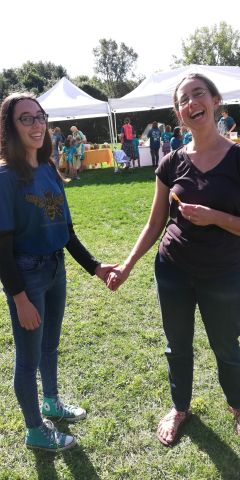 Your child’s childcare center or school, community center, or local library may offer in-person trainings. In-person parent education allows parents the options to ask pertinent questions to their situation and potentially meet other parents to share stories with. A frequent issue that is brought up is relatable to everyone in the class, quality discussions begins, and ideas are shared. Online classes may also offer valuable opportunities to explore materials at your own pace and connect virtually with other parents.
Your child’s childcare center or school, community center, or local library may offer in-person trainings. In-person parent education allows parents the options to ask pertinent questions to their situation and potentially meet other parents to share stories with. A frequent issue that is brought up is relatable to everyone in the class, quality discussions begins, and ideas are shared. Online classes may also offer valuable opportunities to explore materials at your own pace and connect virtually with other parents.
Parenting education can be seen as something negative, like it is a reflection on your ability to parent. Parenting education is not just for parents who are struggling or having severe problems with their children’s behavior—it can be an opportunity for parents to feel more confident as a parent, prevent future problems, enjoy being with their children and help their family get along.
We may invest time and money to take our new puppy to obedience class, take golf lessons or practice our swing, or take our family out to eat or on vacation as a way to invest in ourselves and our families. Similarly, parenting classes are an investment in our personal growth and our children’s future ability to build healthy relationships, make and retain friends, get a job and keep it, and become great parents themselves.
To find more valuable, research-based information about parenting, check out the following resources:
Talking With our Littlest Students About Race
Adapted from Acorn Hill Waldorf Kindergarten
Children are constantly picking up on what is OK to talk about, what is off limits, and how adults react to the topic. Here's how to begin or continue a discussion about race with your child.
Like many other topics, race can be challenging for adults to discuss among themselves, let alone with their children. But while open dialogue about race is limited in our society, that doesn't mean you can't make decisions and set the tone for discussions about race in your home. Talking with young children about race is an opportunity - one you may or may not have experienced when you were growing up.
Some well-meaning parents feel if they do not address the topic of race, their children will be "color-blind." But the reality is that race does have meaning in our society. Your conversations with your child will depend on your own racial identity, the racial make-up of your family (immediate and extended), and your values regarding race—both those you express and those you imply.
Like other crucial conversations you might be beginning to have with your child right now, race discussions should start early and evolve as your child grows.
What They Understand
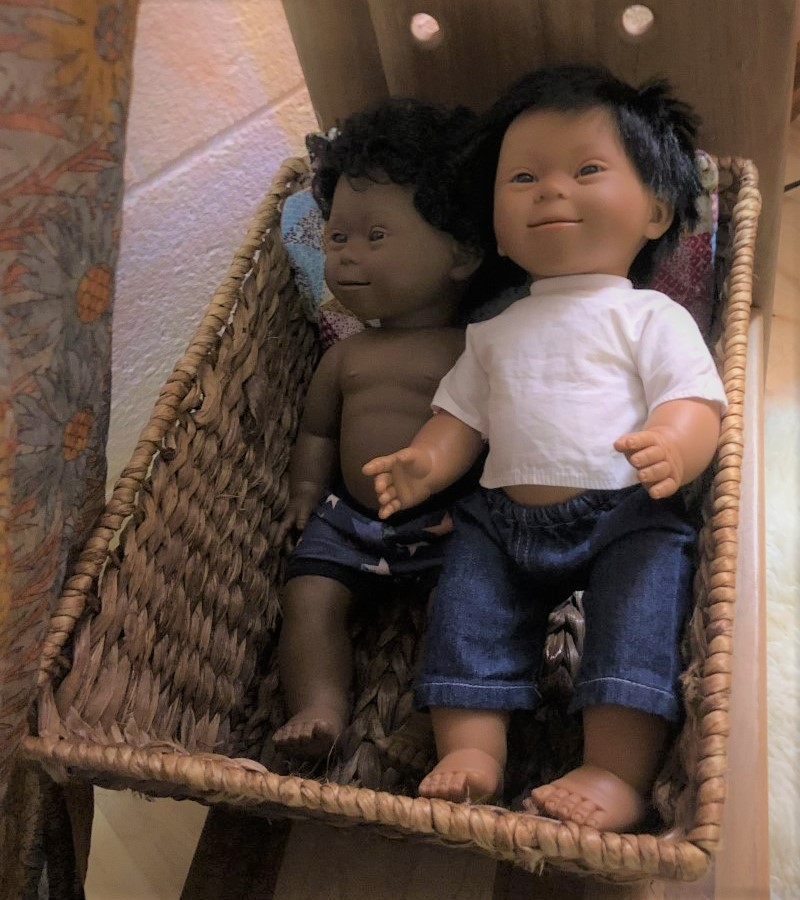 Kids under 24 months do not understand the adult meaning of race: the historical implications of it or how the history and current meaning of race affects our society, but babies and toddlers are beginning to notice differences in appearance. It might be that the child simply looks longer at or perhaps points to a person who looks different from the people she's most used to seeing in her everyday routines. During these moments, the child looks primarily to the adult to gauge their own interest and reaction—toddlers this young are still reliant on their parents' opinions and actions to shape their own. This goes without saying, but how you act around and discuss people from your own culture and other cultures is what your child will first consider appropriate. Toddlers internalize the beliefs of their family and immediate society, a process that will continue throughout their development.
Kids under 24 months do not understand the adult meaning of race: the historical implications of it or how the history and current meaning of race affects our society, but babies and toddlers are beginning to notice differences in appearance. It might be that the child simply looks longer at or perhaps points to a person who looks different from the people she's most used to seeing in her everyday routines. During these moments, the child looks primarily to the adult to gauge their own interest and reaction—toddlers this young are still reliant on their parents' opinions and actions to shape their own. This goes without saying, but how you act around and discuss people from your own culture and other cultures is what your child will first consider appropriate. Toddlers internalize the beliefs of their family and immediate society, a process that will continue throughout their development.
As the children grow, so does their awareness and their misconceptions about race. Studies have shown that by three years old, children are choosing playmates by race and by ages 4-6 their racial prejudices peak. By ages 5 and 6, children are already holding many of the viewpoints that the adults around them have on race. Not speaking to them about the topic means that they are making their own assumptions, and forming their own biases
What to Say
Say something! Your child's understanding of race begins both with what you will talk about and what you do not discuss. Children learn that when they ask a question about someone's race and they are shushed, it's not something they can discuss and is therefore taboo. Talking about race normalizes the topic and makes it less scary for kids.
As any parent who's caught their toddler staring at someone in the checkout aisle or pointing to a passerby in the mall will tell you, racial observations may be embarrassing. It really is important, though, for you to address your child's observations and take that moment to acknowledge the differences they are taking note of.
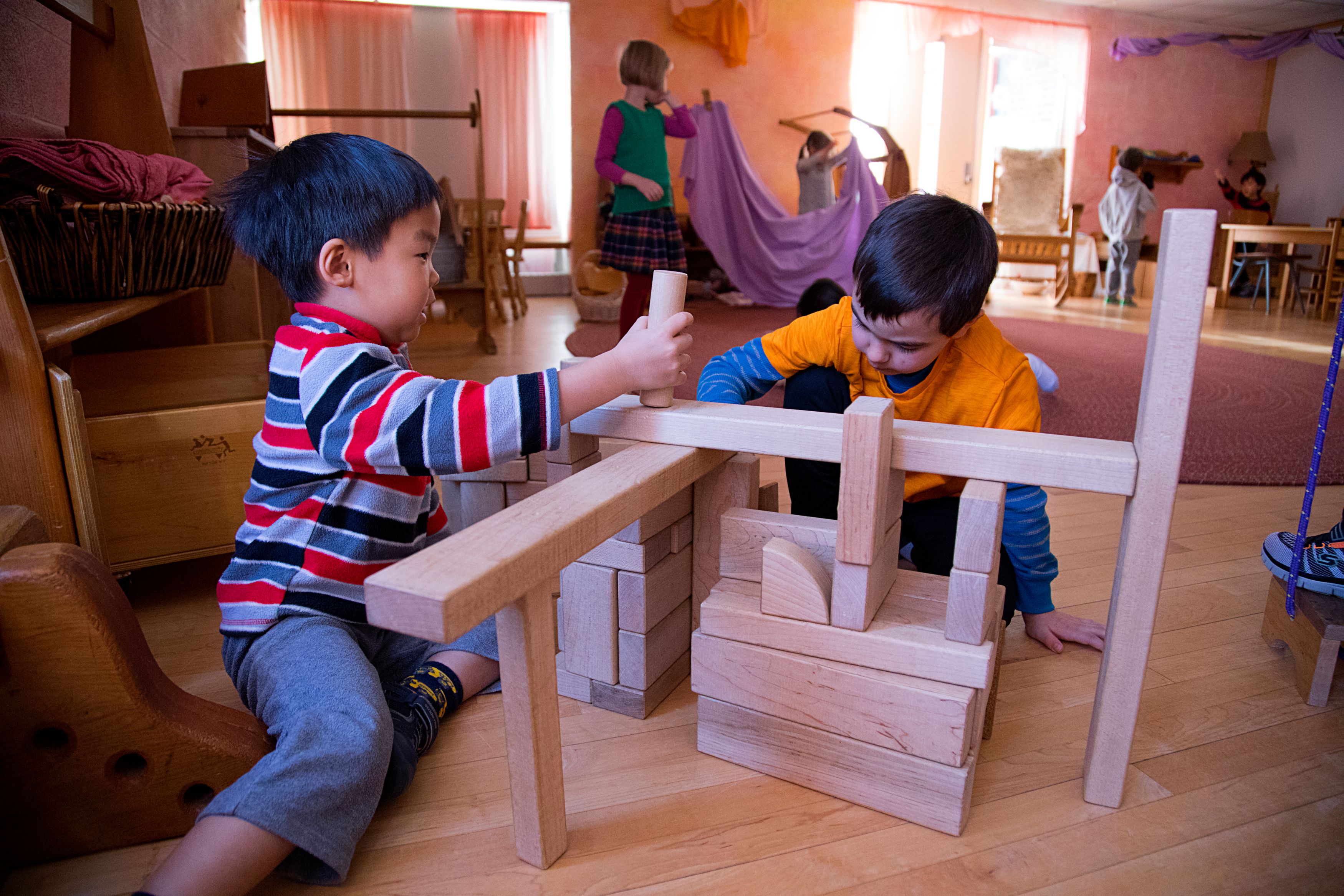 When your child points out (or later asks questions about) people with different skin color than his, address it. For example, if your child is white and asks why an African-American child's skin is brown, explain, "Grownups and kids have all different skin colors. Some have tan and some have brown." When possible, use accurate ethnicity language with your child: "She is white (or Caucasian)/African American (or black)/Latinx (or Hispanic)/Asian-American," etc.
When your child points out (or later asks questions about) people with different skin color than his, address it. For example, if your child is white and asks why an African-American child's skin is brown, explain, "Grownups and kids have all different skin colors. Some have tan and some have brown." When possible, use accurate ethnicity language with your child: "She is white (or Caucasian)/African American (or black)/Latinx (or Hispanic)/Asian-American," etc.
Though toddlers likely won't ask questions about race, children in preschool or grade school will have the vocabulary to articulate observations. Your child might ask why a person has skin a different color or hair a different texture than his. When he does make an observation or inquire about a race, answer the question and give correct information, which may mean doing some homework yourself. Think about and take responsibility for the stereotypes and assumptions we all have about race.
These are some basic ways you can prepare for a lifetime of conversations with your child about ethnicity and diversity
Self-reflect. Take some time and think about your own racial identity, the assumptions you hold, and what lessons you would like to teach your children about race. Talking with friends, family, and other parents can be really helpful. Look for other parents who are interested in open dialogue about race in their families. Talking with other adults will also give you clarity and increase your comfort level when answering questions if this is a challenge for you. Remember, this is often a scary process for adults. Understanding and challenging that fear will be helpful in conversations in your family.
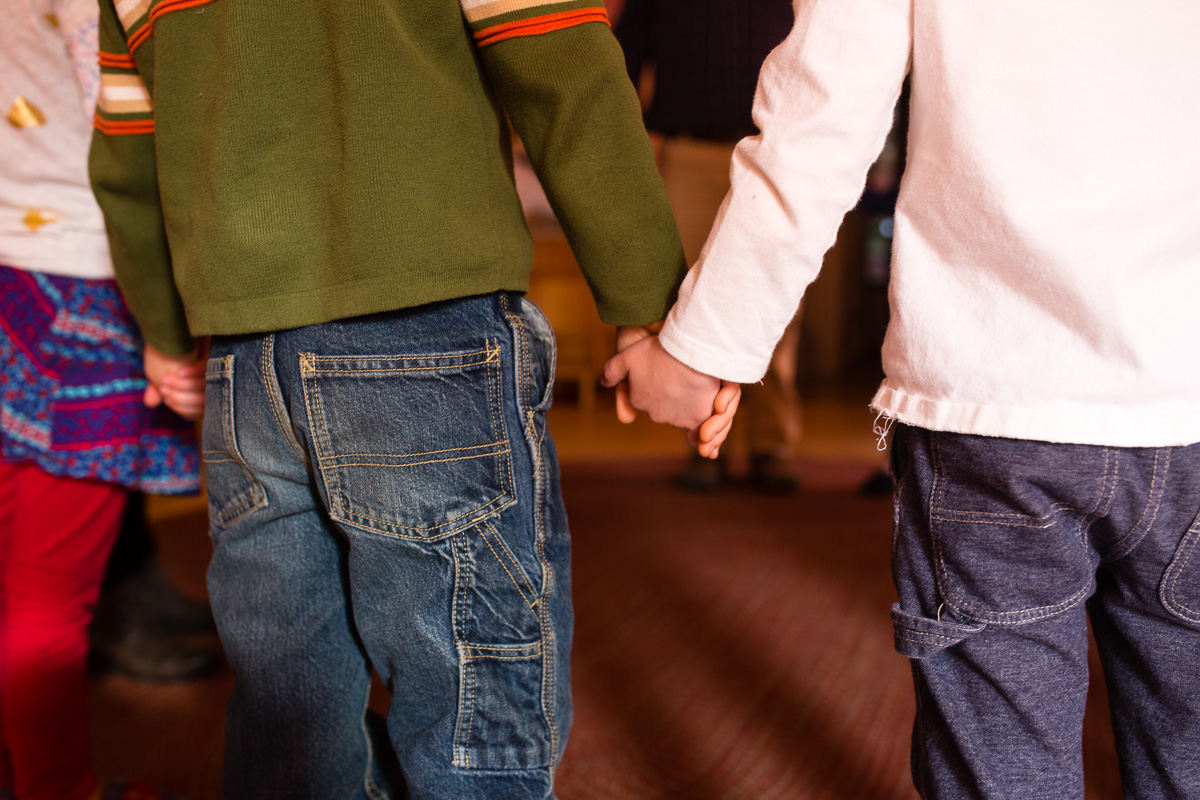 Don't avoid the topic. Particularly in white families, some parents decide to not discuss racial differences. This reinforces that it is a taboo subject for your children. When you have had early conversations about appearances, for example, as your child gets older, you can also begin discussions about racism.
Don't avoid the topic. Particularly in white families, some parents decide to not discuss racial differences. This reinforces that it is a taboo subject for your children. When you have had early conversations about appearances, for example, as your child gets older, you can also begin discussions about racism.
Work on Empathy. Developing empathy comes from knowing your own feelings and beginning to understand feelings in others. How you interact with other people and respond to situations works on shaping that within your child. It may seem small and simple, but it is laying the foundation for how they treat, advocate for and think of others. Here are some Teaching Empathy Tips.
Look at your environment. Self-reflecting also means taking inventory of the images, stories and people that your child sees on a daily basis. Looking at your child’s toys, books, media influences, family, friends and neighborhood/community allows you to see areas for growth or conversation.
Read Books. Books are wonderful because they serve as windows into another’s world, reflections into your own, and give children the ability to connect with others. They also serve as good talking points for bringing up discussions about differences, injustice, and provide ways to celebrate and normalize diversity. Our Early Childhood Library offers a great selection of titles.

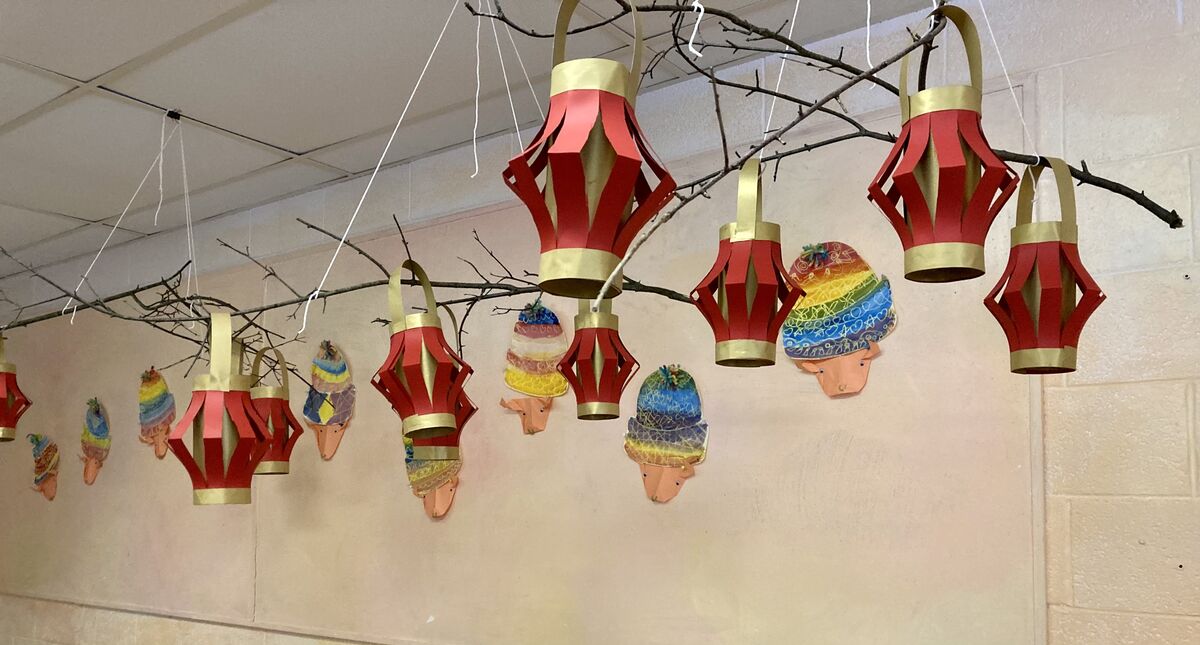

Monthly Observances Help Us Appreciate Our Diversity
 Honoring and celebrating are wonderful ways to teach children about the diversity that makes our world such an amazing place. Part of our school's commitment to diversity, equity, inclusion and justice is to ensure that our curriculum, classroom activities and celebrations include a wide range of diverse and inclusive topics, and one way we do this is by connecting to monthly observances that are held in the wider culture of the United States. Diversity, equity, inclusion and justice work is brought to the students in the everyday classroom, but in addition, the monthly observances give teachers - from Early Childhood through High School - a touch point to making sure specific topics are being offered to our students. Here are just a few examples of monthly observances we share:
Honoring and celebrating are wonderful ways to teach children about the diversity that makes our world such an amazing place. Part of our school's commitment to diversity, equity, inclusion and justice is to ensure that our curriculum, classroom activities and celebrations include a wide range of diverse and inclusive topics, and one way we do this is by connecting to monthly observances that are held in the wider culture of the United States. Diversity, equity, inclusion and justice work is brought to the students in the everyday classroom, but in addition, the monthly observances give teachers - from Early Childhood through High School - a touch point to making sure specific topics are being offered to our students. Here are just a few examples of monthly observances we share:
 Hispanic (or Lantinx) Heritage Month – September 15-October 15
Hispanic (or Lantinx) Heritage Month – September 15-October 15
Our high school students studied and presented on artist Frida Kahlo. Our Early Childhood Lending Library increased their stock of books about Latinx/Hispanic heritage and culture. Teachers read these books in class with the children and the children can take them home to read. It is important for children to have books in which they can see a reflection of themselves as well as a window into the world of another. Check out our Early Childhood Lending Library Catalog. Many of these books are in our Lending Library and almost all of them can be found in the public library.
Disability Awareness Month – October
So much of what Early Childhood aged children learn is from their environment and through play. We expanded our toy collection in honor of Disability Awareness Month to include inclusive and diverse dolls. Children can now play and care for dolls of all skin tones who have glasses, Down syndrome, a port-a-cath and asthma among others.
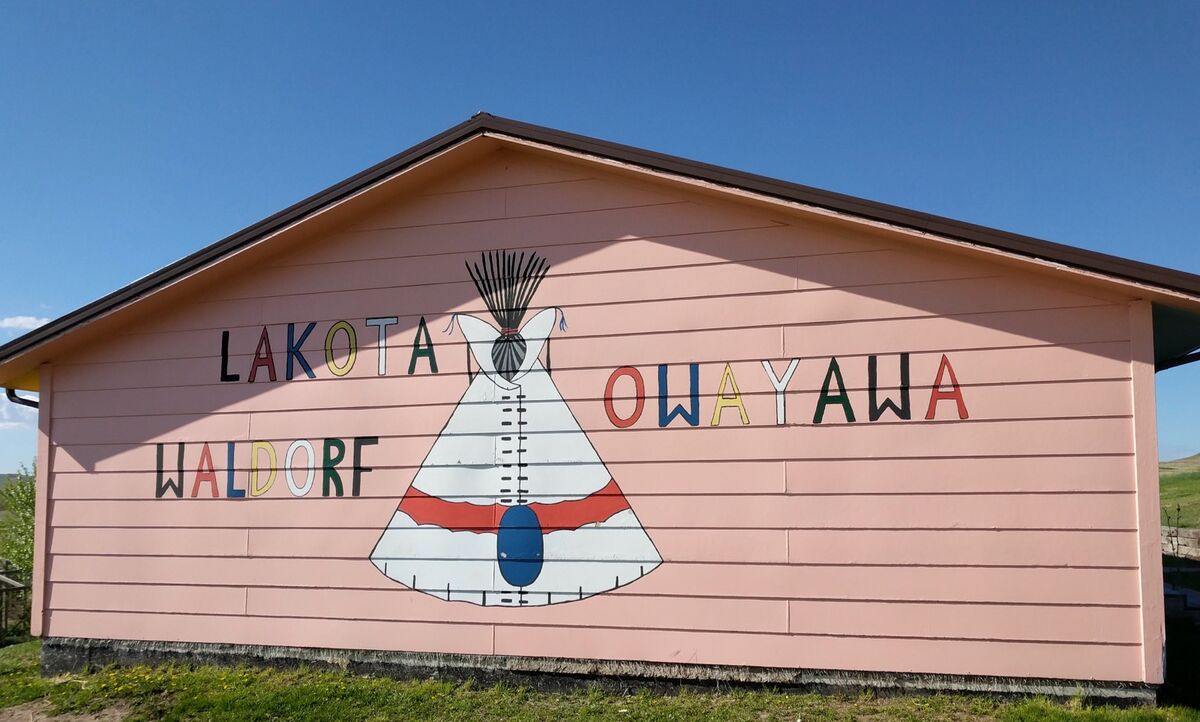 Native American/Indigenous Peoples Heritage Month – November
Native American/Indigenous Peoples Heritage Month – November
Our Grade Five class honored indigenous peoples as part of their daily blessing. Grade Three raised over $6,000 in a fundraiser for Lakota Waldorf School, our sister school on the Oglala Sioux reservation in South Dakota. And, our Early Childhood explored stories of local peoples and planned a visit by indigenous storyteller, Genot Picor, for an active presentation of story and movement about the peoples of the Great Lakes region.
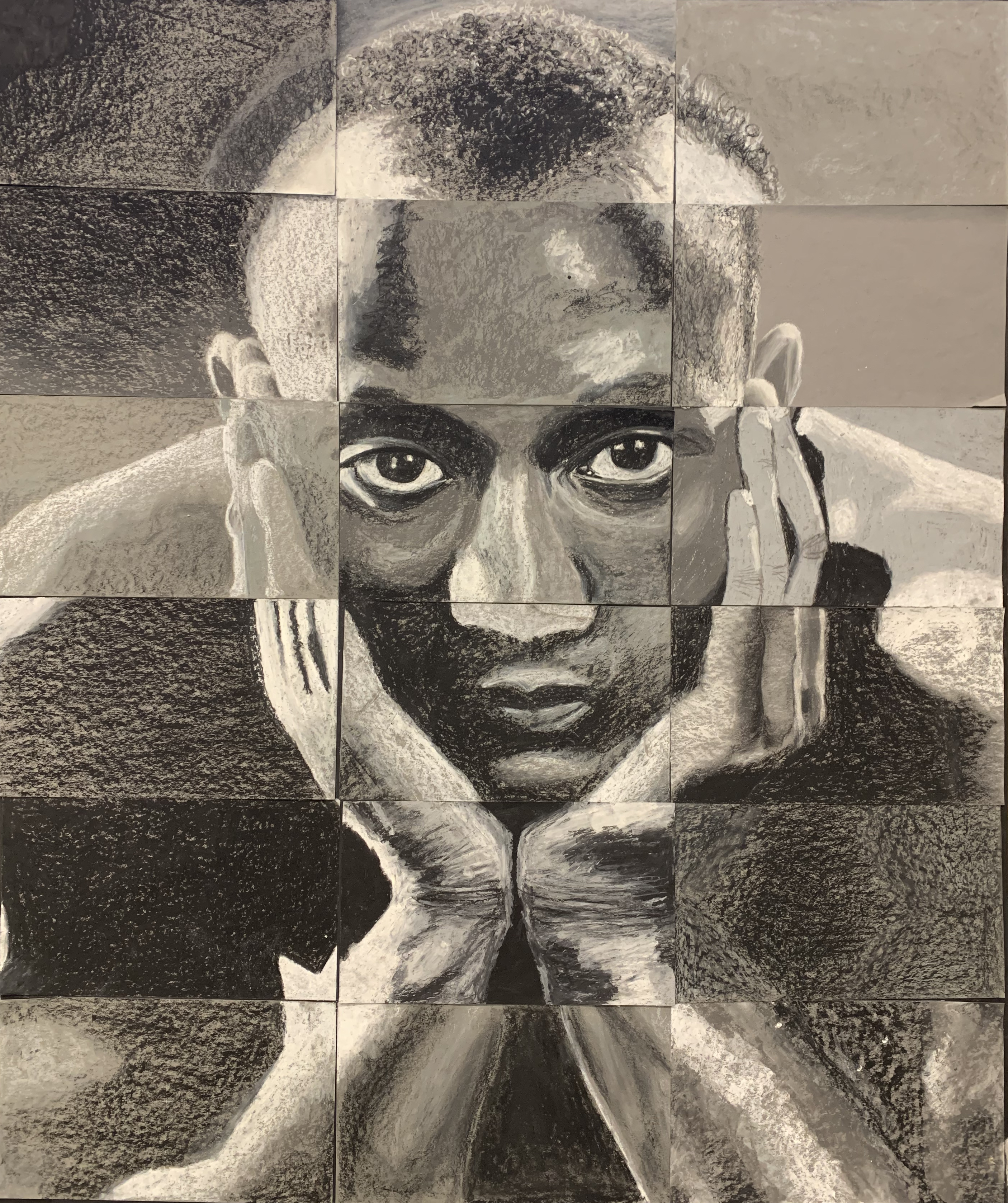 Black History Month – February
Black History Month – February
Professor Peter Boykin presented at the High School about his family history which included the dismissal of his African American great-great-grandfather from West Point Military Academy after being wrongfully accused of staging his own assault. A book on the subject, Assault at West Point, was later made into a movie and a special ceremony at the White House with former-President Clinton, honoring Johnson Chestnut Whittaker and returning his bible, where he had kept his journal and which had been held by the government as evidence. The students were very engaged during his presentation and were eager to talk about what they could do personally to continue to strive for equality. We will be inviting Mr. Boykin to return to speak more about his family history and the future strive for equality during Black History Month.
We're proud of the long-standing efforts of our school community to recognize and honor all people. We look forward to honoring these months as well as others throughout this year and in future years, and we invite you to participate and share your thoughts, suggestions and celebrations with us!
· March - Women's History Month
· April – Earth and Ecology Month
· May - Asian Pacific Heritage Month
· June - Pride Month
Social & Emotional Heath

Social and emotional skills are vital for a child’s future, and in young children those skills are undergoing great expansion. The child lives in the present moment and in a world of wonder which can make social and behavioral obstacles challenging. Wonderful opportunities present themselves during the child’s time in the classroom and at home, and adults can help support learning while meeting the child at the developmental stage that he or she is in. This topic is at the heart of Waldorf education.
Parents often ask us about strategies and helpful approaches to navigating discipline and conflict. One of the most important aspects that we consider is how the child views him or herself and others.
It is easy to categorize things into good and bad, right and wrong; but human interactions and social relationships are much more complex than that.
Every human being has experienced times in which they have been unkind, insensitive or hurtful. It is in remembering these times and seeing the other person as a striving human being, that we can work through conflict and develop empathy for others. The last thing that we want is a child to begin to feel as though they are a bad person and unworthy of our love and care. One of the things we aim to foster is an environment of inclusivity and seeing others as equally important and valuable.
Each child enters a class with his or her own wonderful gifts and challenges and grows tremendously from what each classmate brings to the group. The world of play offers a child a stage to try on many hats which may manifest in various emotions, behaviors and roles. Children will often work out some social questions and conflicts that they are trying to comprehend through their play. Through observing children's play, adults are given a window into things the child is trying to figure out, which are often questions of morality. 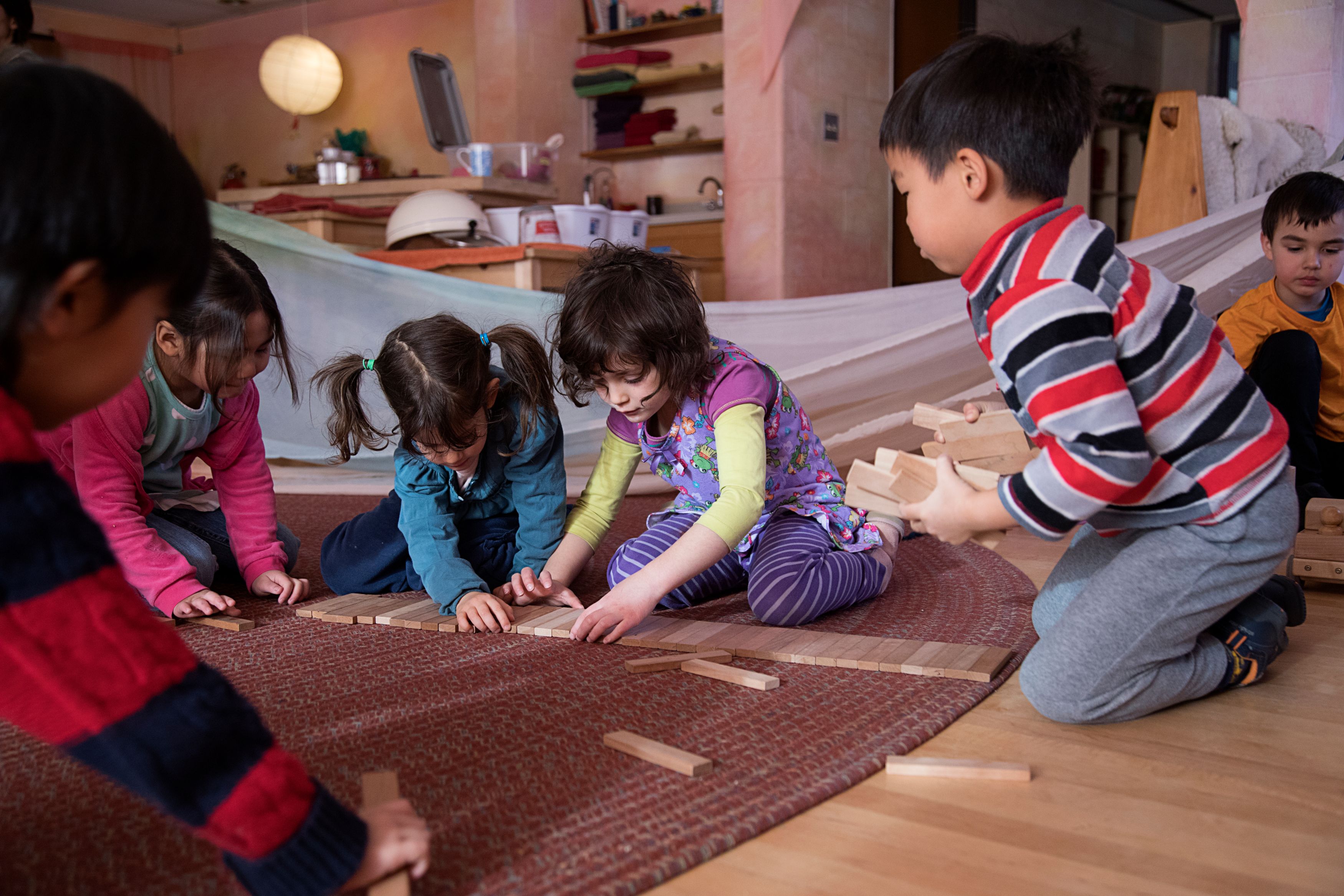
At RSSAA, children are encouraged to work challenges out first on their own to help them develop the foundation of lifelong communication and social skills. This is all done in the safety of a well-prepared and cared for classroom environment. The teacher works hard to maintain this environment while supporting the children in the class and the joys and struggles that they will experience together. At home, it is the same. The environment of family and the values that are set for how to treat one another allow the child a safe place to grow. Sibling interactions can sometimes be extremely difficult, but also tremendously rewarding. The same holds true for the interactions in the classroom.
The adult’s tone is important and should be relaxed and practical, stating observations or asking a needed question.
Approaching conflict without judgement can be one of the most difficult things for adults to do, especially when they clearly see a child do something unkind or hurtful. However, we have found that this is key to creating a space for growth to happen. By observing or sportscasting what you saw, without tones of judgement, a child can feel less defensive and better able to reveal the reasons behind their struggle. This can help take them out of the feelings of fight or flight and into a realm of learning and reflection. By speaking without judgement and describing another’s perspective of what happened, the children start to be able to see another person’s perspective, which in turn develops empathy.
Possible active observer statements:
I saw that Sally had it and Jim grabbed it
I have not heard you ask him for it
I see that Julie has many rocks and Jerry does not have any
Possible prompts:
You may ask him for a turn when he is done
You may talk to her first about that
When we have our coats on, we can go outside to play
When we are sitting and everyone is ready, we will pass the snack
Redirecting and engagement are great tools.
When situations are emotional, sometimes some breathing space and a shift of focus can make a world of difference. Redirecting the focus to a different activity with a child can shift the focus to practical work and engagement. Once the child is ready, the adult can invite other children to join. Often good work can bring two children together with a purposeful task and hard feelings start to dissolve. This could be all that was needed at the time to move past what happened, while other times the child may need this time to come to peace before bringing the conflict up in a way that they can talk about it. As the evening winds down it is easy to recap the day, acknowledging the areas you connected and the struggle that was had.
Acknowledging someone’s feelings can be powerful.
Whether a child is sad, angry or upset, stating that out loud gives the message to the child that you see that something is bothering them and can help them learn about identifying and coping with their emotions. Sometimes it is helpful to recognize the c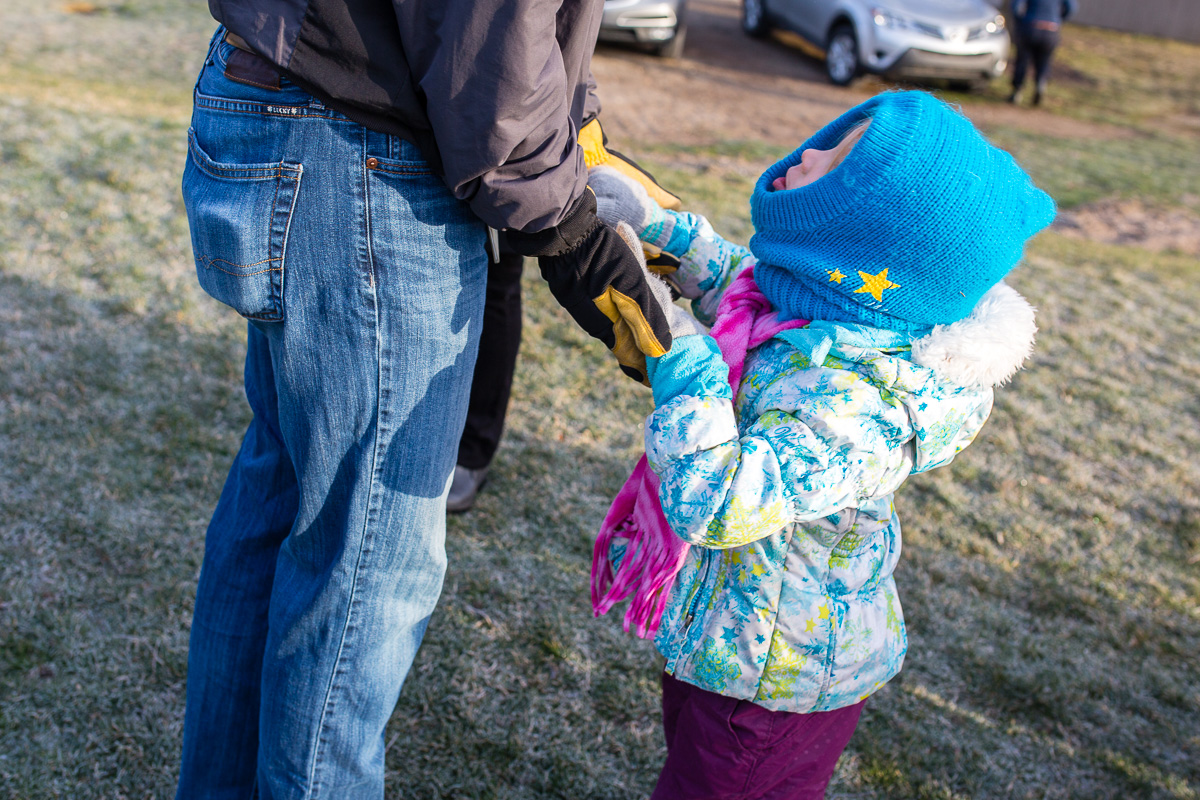 hild’s feelings simply before moving into practical ways to resolve the situation. An adult saying an acknowledging phrase helps the child feel connected to the adult or group. Here are some example phrases:
hild’s feelings simply before moving into practical ways to resolve the situation. An adult saying an acknowledging phrase helps the child feel connected to the adult or group. Here are some example phrases:
It looks like you are upset.
I’m sorry that happened.
That must have felt....
Reconnecting is key.
Showing that you care about a child in the moment of struggle lets them know that you still have a positive view of them and they are valuable. Reconnecting could be as simple as saying: “I know that you are such a kind and loving person. I remember how you found that beautiful rock the other day and brought it home for your brother. It’s okay to get mad, but we need to make sure no one gets hurt.”
Adults make mistakes too: let them see how you handle it!
It is important that the children can see that adults can make mistakes too, and that we are always trying to do our best. We work to be a model worthy of imitation, and that extends to our social interactions with the children and other adults. It is powerful for a child to see an adult make a mistake and then work to fix it, whether it be apologizing or having honest communication with someone.
It is ideal for the child to initiate resolution.
When children have a social conflict, it is ideal for the child to initiate resolution first. Ideally, they will grow the capacities and skills to navigate all the social and emotional struggles that will happen throughout their childhood and adult life. However, sometimes an adult is needed to help facilitate. This is one of the hardest things to get right. Once a teacher starts to see a pattern emerging then he/she moves towards more direct forms of interventions. Otherwise, simple redirection or a listening ear can be just the right tool. Not every moment needs to be talked about with an adult, and sometimes the children can come up with a compromise that is unfair in adult eyes but perfectly fair in theirs. Give them a minute (or a few) to try to figure things out, if it feels safe to do so.
Being accountable is an important thing to learn.
Taking accountability when someone does something wrong can be hard: no one wants to do something mean or wrong to those they love. Accountability without blame can be accomplished if we can help children to feel comfortable in a somewhat uncomfortable situation. Reminding in a firm but loving way that unkind words and actions can and do hurt. This can be truly recognized when the children can be brought together in a safe and productive way through meaningful activities.
Sometimes children need a break from one another in play.
S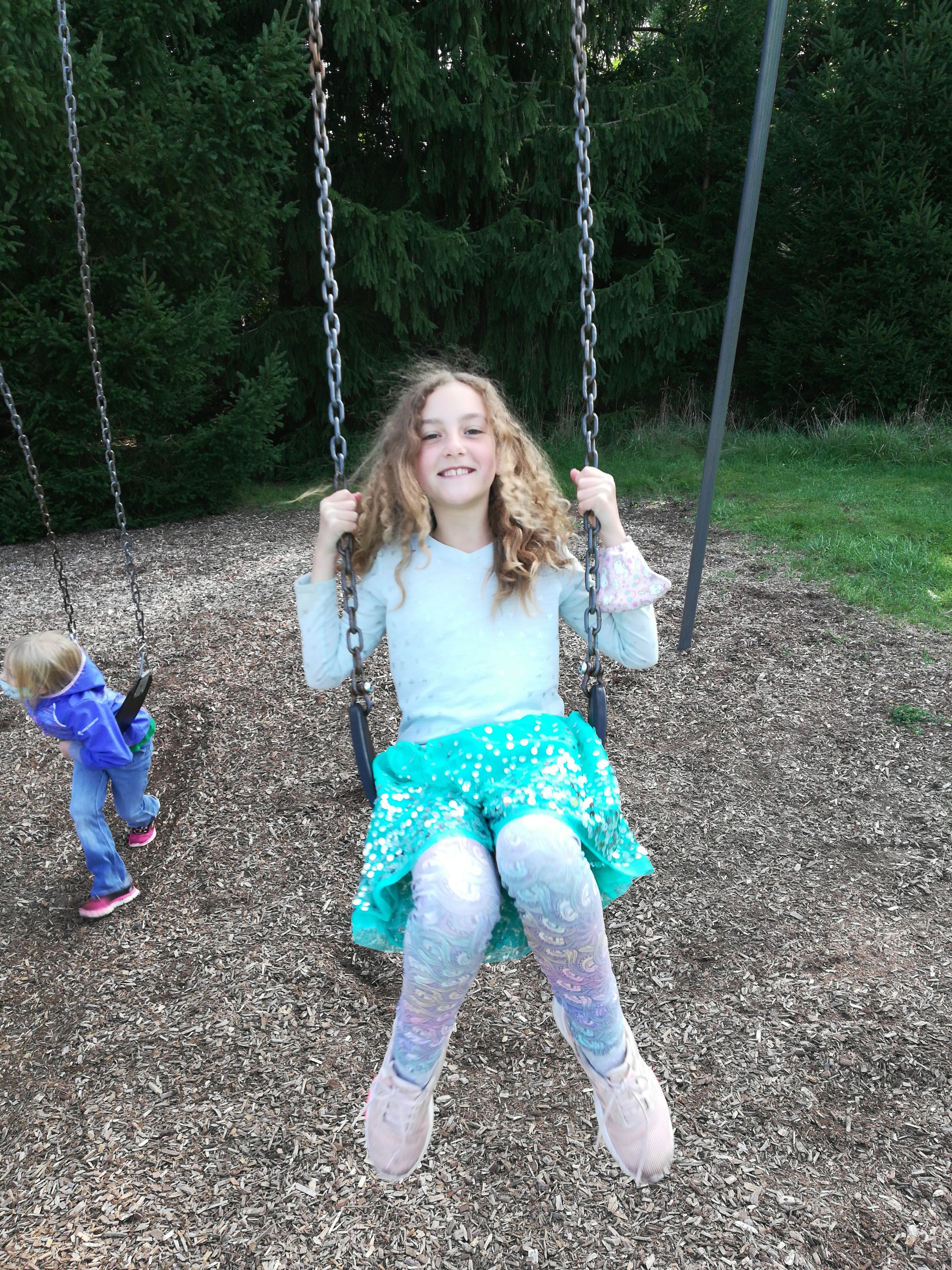 ometimes children can just be in a bad mood and that is okay. We can help their friends find other play options while giving the upset child room to have the quiet space they need to work things through. There are times that children can be purposefully exclusionary and in those situations we can say “We play with everyone”. Sometimes there are children at the stage where they can only play with one or two children at a time, and it's important that we help protect that space for them.
ometimes children can just be in a bad mood and that is okay. We can help their friends find other play options while giving the upset child room to have the quiet space they need to work things through. There are times that children can be purposefully exclusionary and in those situations we can say “We play with everyone”. Sometimes there are children at the stage where they can only play with one or two children at a time, and it's important that we help protect that space for them.
Therapeutic stories work wonders while bringing imagery to situations.
If a problem seems to be reoccurring or to have an underlying impulse, the teacher may decide to bring a therapeutic story to help the child move through the problem in an imaginative way without the child feeling the weight of his/her actions attached. Sometimes a story is told in the moment, where other times it is told to the group many days in a row or sent home with a child to be read before bedtime. This can be easily done at home. They can be stories of animals, little boys and girls or even stories of you as a child. Author Susan Perrow has an amazing collection of already written tales for various behaviors such as: grief, hitting, grumpy moods, or being shy.
An apology should not be forced.
Instead of forcing an apology that is not heartfelt, modeling caring behavior and inviting a child to participate in it can help facilitate healing between children. A child can help fetch a bandage or ice pack, or possibly rub the other child’s back or offer a hug. Depending on the situation, a teacher might give verbal prompts such as “Sometimes if I hurt someone by accident, I say ‘I am sorry, I didn’t mean to do hurt you. It was an accident.’” A child may choose to try a verbal apology or not, but either way the hurt child is helped by this.
Nourishing the physical body.
If a child gets a bump or bruise, a deep breath, a drink of water or bite of food can do wonders. Also, braiding or combing hair, applying lotion or a little massage can bring a child back into their body and help them feel well cared for. Possible tools we can use for comfort are: ice pack, essential oils, rescue remedy, cream, and a bandage.
Adult Reflection
It is important for the adult to later process and reflect on challenging situations in order to get a bigger sense of what happened and what is happening. Tracing the steps backwards to what lead to the issue can help the adult find the catalyst and that can help them avoid the situations in the future.

If you want to learn more about the Metaverse Development, please read our blog